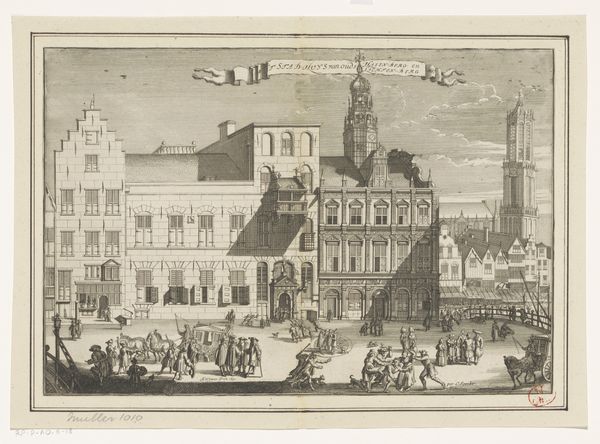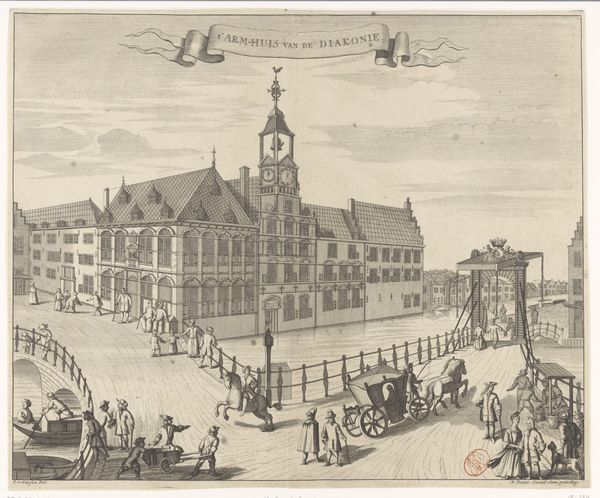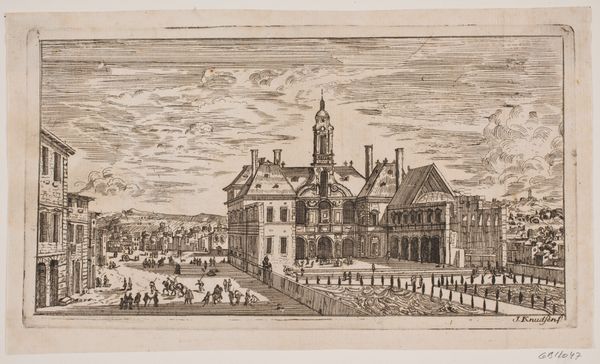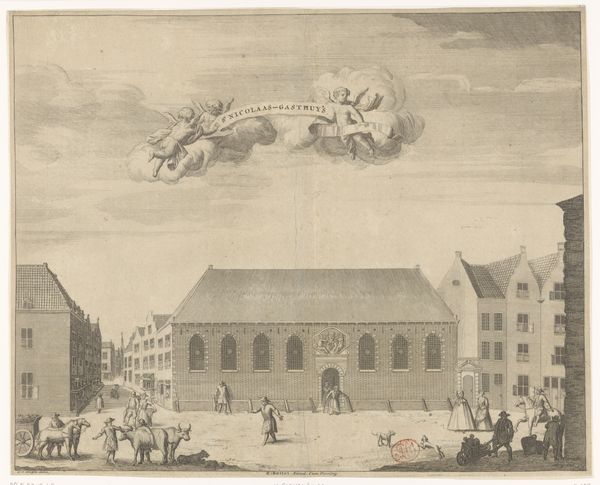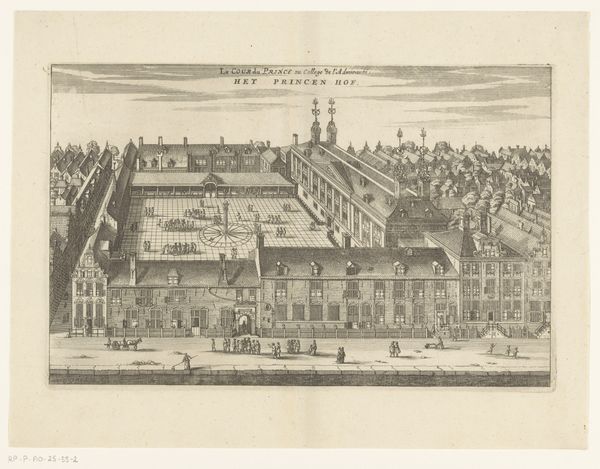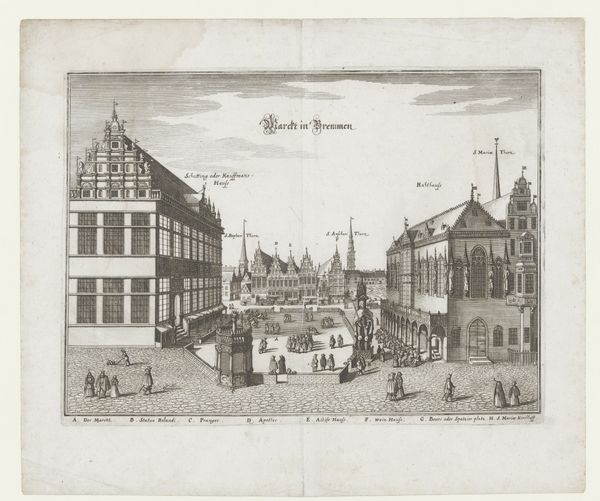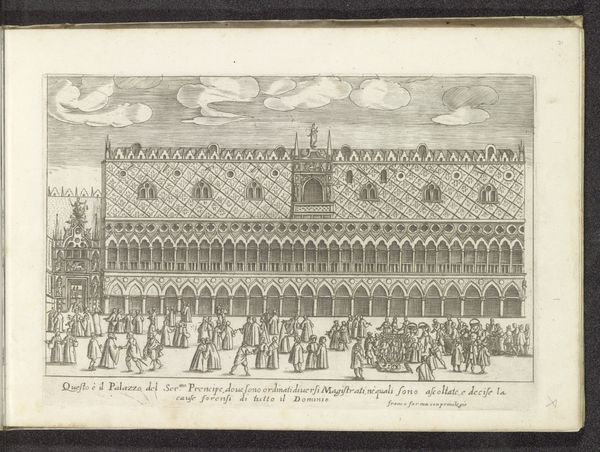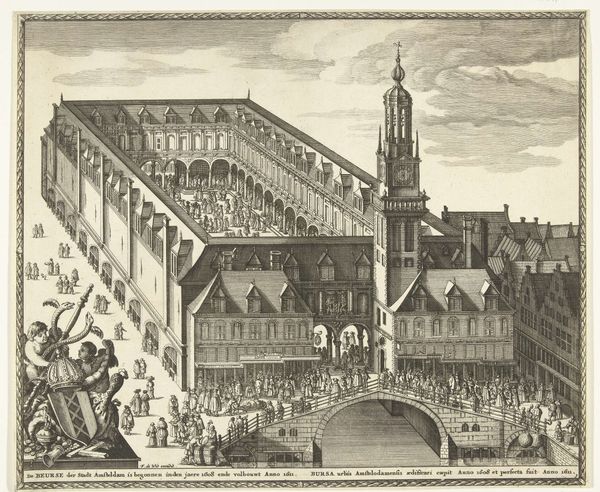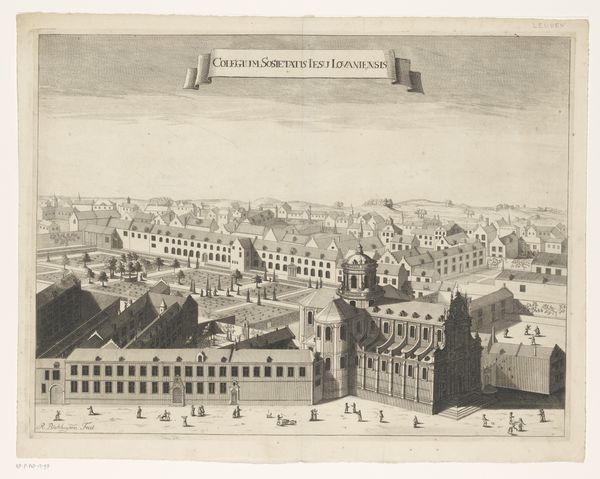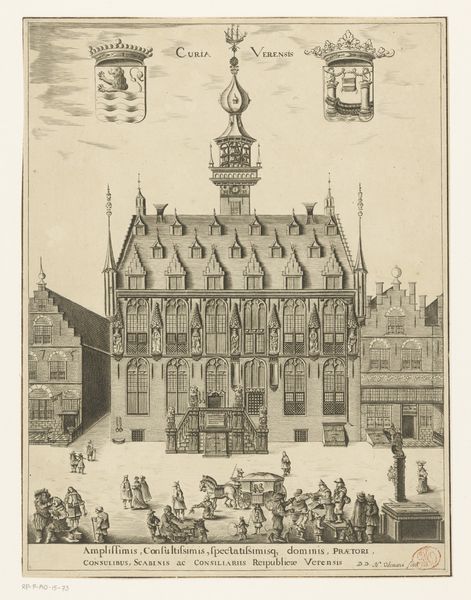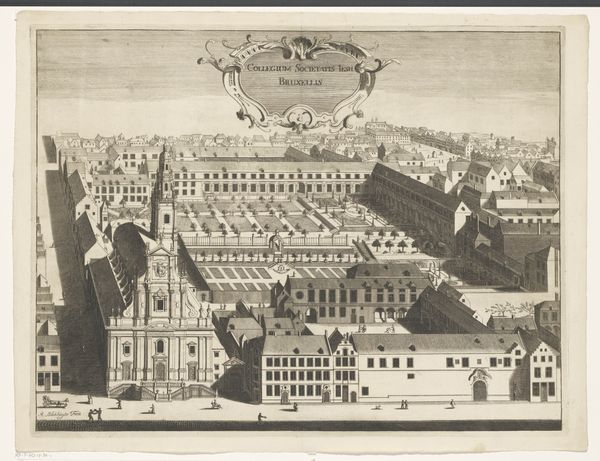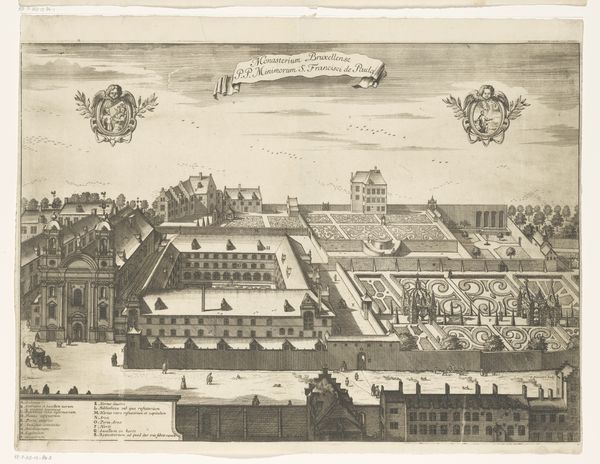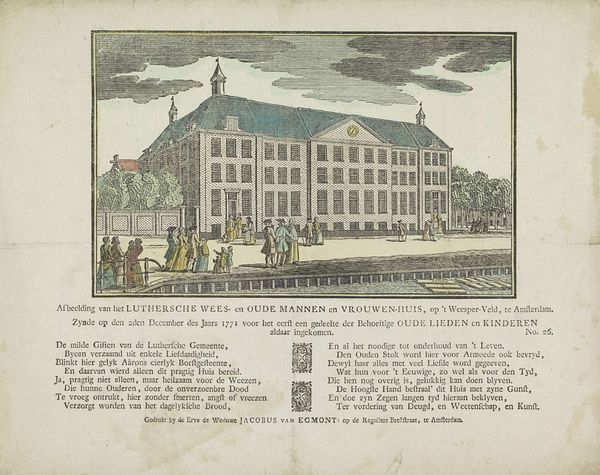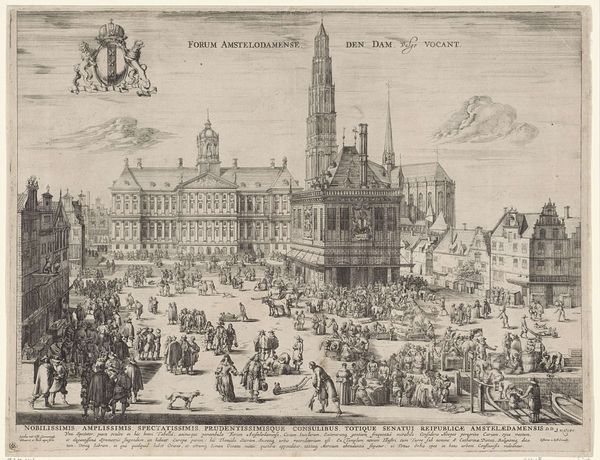
drawing, print, engraving, architecture
#
drawing
#
baroque
# print
#
cityscape
#
engraving
#
architecture
Dimensions: Sheet: 5 13/16 × 10 1/16 in. (14.8 × 25.6 cm) cut within platemark and mounted
Copyright: Public Domain
This print of the Royal Exchange was made by Wenceslaus Hollar, likely in the mid-17th century, using the etching technique. Etching, unlike engraving, allowed for a more spontaneous, free-flowing line. The artist would cover a metal plate with a waxy ground, draw through it with a needle, and then immerse the plate in acid. The acid would bite into the exposed lines, creating the image, after which the plate was inked and printed. Look closely, and you can see how Hollar used this method to capture the bustling activity of the Exchange, filling the courtyard with tiny figures. The precision of the architectural details is remarkable, achieved through the careful control of the etching process. The print served not only as a record but also as a form of promotion, celebrating London's burgeoning commercial power. By understanding the printmaking process, we gain insight into the ways images were disseminated and how perceptions of places like the Royal Exchange were shaped and shared. It encourages us to reflect on the intimate relationship between labor, materials, and cultural representation.
Comments
No comments
Be the first to comment and join the conversation on the ultimate creative platform.
